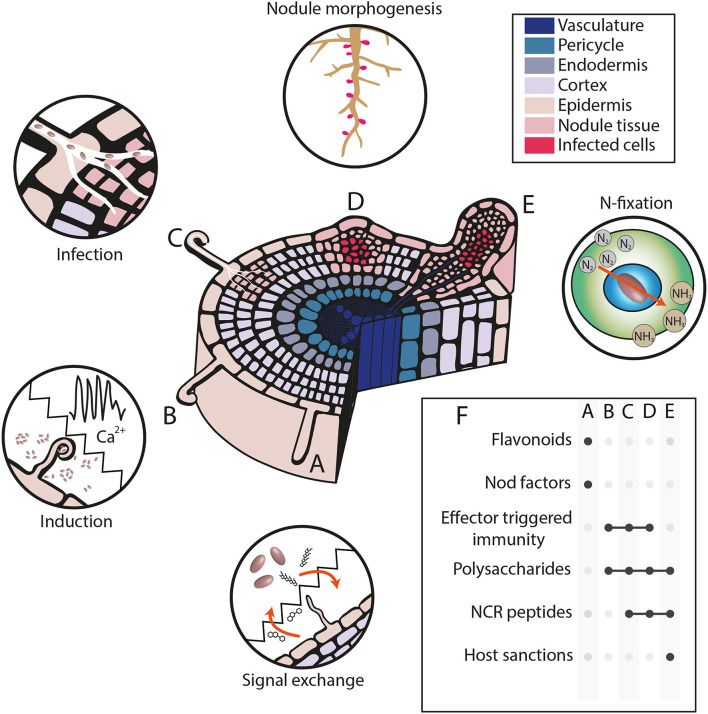Figure 3.
Determinants of host range specificity in legume-rhizobia symbiosis. (A–E) Cross-section of a legume root depicting typical stages of nodule formation during a compatible rhizobial interaction. (A) Flavonoids are exuded into the rhizosphere by the legume and are detected by rhizobia which reciprocate through Nod factor secretion. (B) Nod factor recognition induces changes in the plant including fluctuations in Ca2+ and curling of root hairs which can trap nearby rhizobia. (C) Rhizobia are able to invade the plant root through the formation of an infection thread; simultaneously, cell divisions in the cortex give rise to a nodule meristem. (D) The developing nodule enlarges due to continued cell divisions and its cells are colonized by rhizobia. (E) Within colonized cells, rhizobia are enclosed within specialized structures called symbiosomes where they differentiate into bacteroids and convert nitrogen obtained from the atmosphere into ammonia which is used by the host plant. (F) Summary of factors that influence host compatibility at each of the previously described stages, with stages highlighted with a black dot where a factor is a key determinant.

